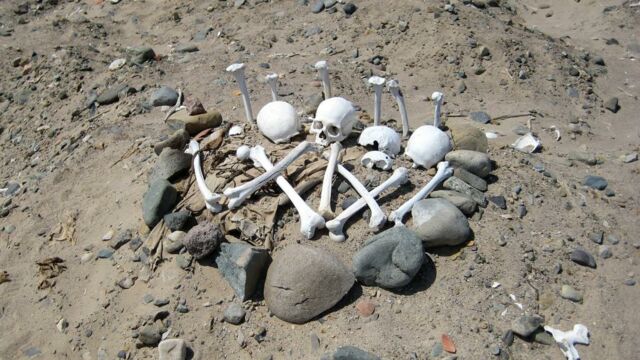Hallucinogenic plants and psychotropic stimulants were central to beliefs, rituals and divinatory practices in the ancient Andes. And the Inca Empire, one of the largest in pre-Columbian America, was no exception.
Discover our latest podcast
According to a new study published in the Journal of Archaeological Science, Inca children chosen to undergo the Capacocha, a ritual sacrifice intended to regain the benevolence of the spirits, were drugged for several weeks in order to keep them calm in the face of certain death.
Inca children drugged before being sacrificed
In the heart of the Inca Empire, which was one of the main Andean civilisations between the 15th and 16th centuries, human sacrifices were commonplace, to celebrate major events such as the birth of a king or a war victory.
The Capacocha, on the other hand, was a practice carried out by priests hoping to control the population through the threat of divine retribution, as previous studies have shown.
For the purposes of this study, the researchers conducted toxicological analyses on the remains of two children sacrificed during such ceremonies. The two children, agedsix or seven, were immolated more than 500 years ago on the mountain of Ampato in southern Peru.
Through hair and nail samples, the researchers discovered that in the last weeks of their lives, the victims regularly chewed coca leaves and were intoxicated with ayahuasca, a hallucinogenic beverage which the researchers suspect was used to ‘reduce the anxiety and depressive states of the victims’.
Reducing the victims' depressive states
According to the researchers behind the study, it is quite possible that the children knew weeks in advance that their sacrifice was imminent, and that they probably did not volunteer for the task.
The study authors wrote:
In modern medicine, the properties of harmine have led to the use of ayahuasca in the treatment of depression,
The Incas may have consciously used the antidepressant properties of Banisteriopsis caapi (a plant used in the preparation of the drink) to reduce the anxiety and depressive states of the victims.
This article was translated from Gentside FR.
Read more:
⋙ Why did the Maya have very good dental hygiene?
⋙ Ruins of a mysterious 3400-year-old empire discovered (PHOTOS)















